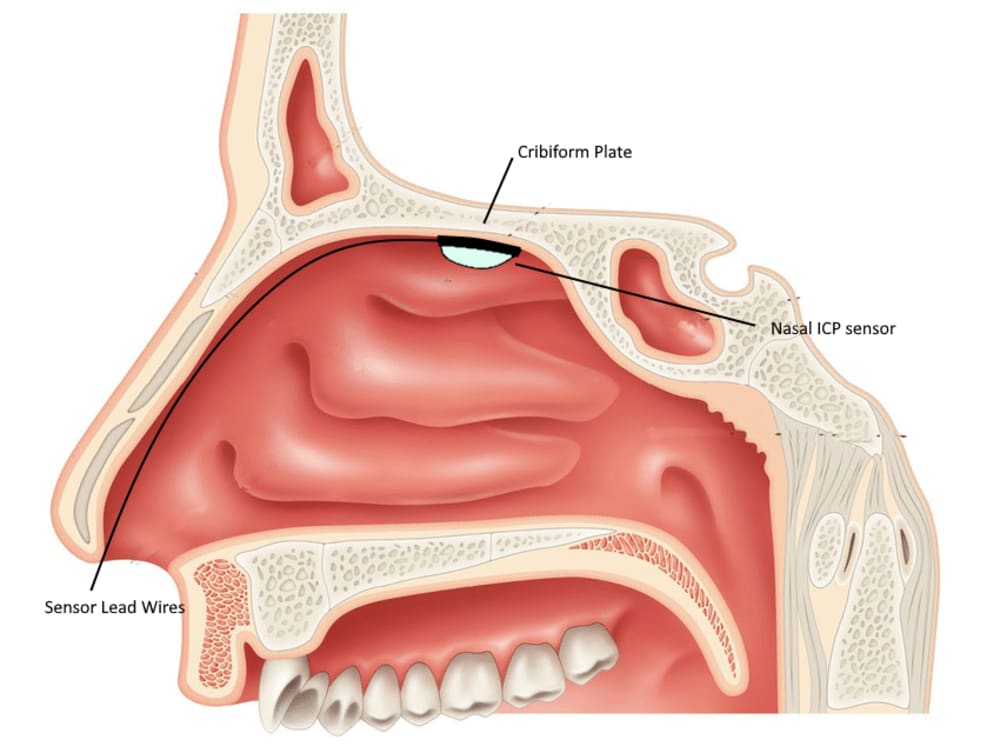
Trauma-induced hydrocephalus is a major health concern for military personnel, especially those who have suffered traumatic brain injuries (TBIs) during combat or training. It is estimated that around two-thirds of service members with moderate to severe TBI are at risk of developing hydrocephalus. CSF pressure measurement is crucial for early detection of hydrocephalus, preventing irreversible brain damage and tailoring treatment strategies, while ultimately improving outcomes for affected military personnel. Accurate and continuous ICP monitoring is essential for assessing neuro-intensive states. Presently the gold standard is direct measurement of ICP via ventricular drainage or parenchymal probe, however, this procedure is invasive, time-consuming, and carries a significant risk of infection, hemorrhage, and CSF leak, as well as requiring advanced training and equipment, making it unsuitable for settings outside intensive care units. Although many emerging technologies have been introduced to non-invasively estimate ICP, none of these methods have shown sufficient accuracy and reliability for routine clinical use. There is an urgent need to create highly reliable, cost-effective, non-invasive methods for safely and dynamically monitoring CSF pressure, thereby optimizing clinical care for patients with brain disorders or trauma, like hydrocephalus and TBI. A novel non-invasive trans-cribriform plate ICP monitoring system has been developed that can continuously record ICP and characterize its dynamics by utilizing an ultra-sensitive G-Putty-based pressure transducer.
G-Putty based pressure sensor
G-Putty is a next generation sensing technology developed by infusing graphene into a highly viscoelastic silicone polymer. The addition of graphene imparts unique properties to the nanocomposites (putty), including enhanced electrical conductivity and sensitivity to the slightest deformation or impact, with gauge factors > 500. G-Putty sensors have garnered attention for their potential for various medical diagnostic applications. For example, they can be mounted on the chest and neck of human subjects and used to detect subtle changes in breathing, pulse, and blood pressure, with hundreds of times more sensitivity than industry standard sensors, making it an excellent candidate for continuous ICP monitoring.
ICP detection through Olfactory cleft
The olfactory cleft is a narrow area in the most superior part of the nasal cavity. It is comprised of three superimposed tissues: nasal mucosa, ethmoid cribriform plate, and dura mater. Evidence from humans and other mammals suggests that CSF flows through the perforations of the cribriform plate, which is a fenestrated bony plate and the structurally thinnest portion of the skull base that separates the cranial and nasal cavities. ICP fluctuations drive the wave-like pulsatile motion of CSF along the compliant spinal canal. Pulses within the CSF will be detected by slightly moving the very flexible cribriform plate into the intracranial cavity once the catheter reaches the olfactory cleft and its adjacent sensor is positioned for best contact with the olfactory epithelium. A direct reading of the ICP can be obtained through the connected pressure monitor system.
-
Awards
-
 2024 Top 100 Entries
2024 Top 100 Entries
Like this entry?
-
About the Entrant
- Name:Leonid Bunegin
- Type of entry:teamTeam members:
- Erik Weitzel
- Patent status:pending









